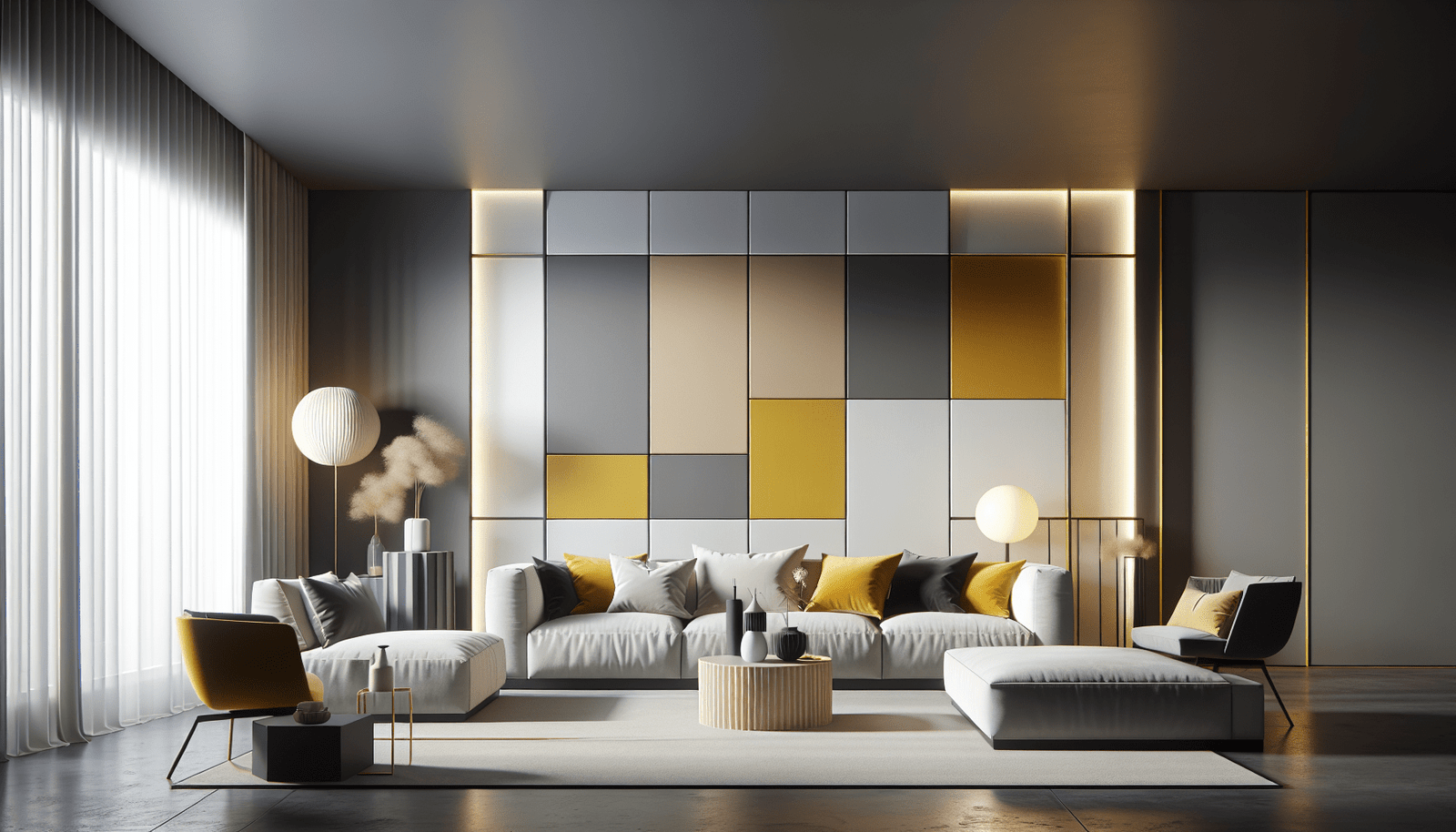Welcome to the world of color-blocked interior design, where vibrant hues and bold contrasts come together to create a dynamic and visually appealing space. By incorporating this design technique into your home, you can add a touch of modern sophistication and personality to any room. Whether you choose to experiment with contrasting colors or stick to a more monochromatic palette, color-blocking allows you to express your individual style and create a truly unique and inspiring living environment. So go ahead, unleash your creativity and let the beauty of color-blocking transform your home into a work of art. Have you ever felt overwhelmed by all the different elements in interior design? Do you struggle to find a cohesive color scheme that ties everything together? If so, then color-blocking might be the solution for you. By breaking down your space into distinct color sections, you can create a bold and modern look that is both eye-catching and easy to execute. In this article, we will explore the beauty of a color-blocked interior design and how you can incorporate this trend into your own home. Let’s dive in!
What is Color-Blocking?
Color-blocking is a design technique that involves using solid blocks of color to create a dynamic and visually striking interior. Instead of relying on patterns or intricate designs, color-blocking focuses on the contrast and balance between different hues. By separating your space into distinct color zones, you can create a modern and cohesive look that is both stylish and versatile.
Color-blocking can be applied to walls, furniture, accessories, and even architectural elements. Whether you prefer a bold and dramatic palette or a subtle and understated scheme, there are endless possibilities when it comes to incorporating color-blocking into your home.
Choosing the Right Colors
When it comes to color-blocking, the key is to choose a cohesive color palette that complements your space. Start by selecting one dominant color that will serve as the foundation for your design. This color will set the tone for the rest of the room and should be a shade that you love and feel comfortable with.
Once you have chosen your dominant color, select a few accent colors that will be used to create contrast and visual interest. These colors should be complementary to the dominant hue and can vary in intensity to create depth and dimension.
Planning Your Layout
Before you start painting or buying furniture, take the time to plan out your color-blocked design. Consider the layout of your space and how the different color blocks will interact with each other. Think about the flow of the room and how you want the eye to move through the space.
You can use mood boards, color swatches, and digital design tools to help visualize your color scheme and experiment with different combinations. Don’t be afraid to play around with different layouts and color placements until you find a design that feels right for you.
Implementing Color-Blocking Techniques
Now that you have chosen your colors and planned out your layout, it’s time to start implementing color-blocking techniques in your home. Here are a few ideas to get you started:
Painted Walls
One of the easiest ways to incorporate color-blocking into your interior design is by painting your walls in different hues. Consider painting each wall a different color to create a bold and dramatic effect, or use two contrasting colors to highlight architectural features like doorways or windows.
You can also create horizontal or vertical color blocks by painting sections of your walls in different colors. This technique can help define different areas of your space, such as a dining nook or seating area, and create a sense of cohesion and continuity.
Furniture and Accessories
Another way to introduce color-blocking into your home is through furniture and accessories. Look for pieces in bold, solid colors that will complement your existing color scheme and add visual interest to your space.
Consider incorporating color-blocked throw pillows, rugs, and curtains to add pops of color and texture to your room. You can also mix and match furniture pieces in different colors to create a playful and eclectic look that reflects your personal style.
Architectural Details
For a more permanent color-blocking solution, consider adding architectural details to your space. You can use contrasting trim, molding, or wainscoting to create visual interest and define different areas of your home.
Consider painting your doors, window frames, or baseboards in a different color to create a striking focal point and add depth to your interior design. These subtle touches can make a big impact and enhance the overall look and feel of your space.

Benefits of Color-Blocked Interior Design
There are several benefits to incorporating color-blocking into your interior design. Here are a few reasons why you should consider this trend for your home:
Bold and Modern Look
Color-blocking is a bold and modern design trend that can instantly refresh and update your space. By using solid blocks of color, you can create a contemporary look that is both on-trend and visually striking.
Versatile and Customizable
One of the great things about color-blocking is that it is versatile and customizable. You can choose from a wide range of colors and combinations to create a design that reflects your personal style and taste.
Whether you prefer a monochromatic palette or a vibrant mix of colors, color-blocking allows you to experiment and play with different hues to create a look that is uniquely yours.
Creates Visual Interest
Color-blocking is an effective way to create visual interest and draw the eye to specific areas of your space. By using contrasting colors and geometric shapes, you can highlight architectural features and create a sense of depth and dimension.
Color-blocking can also help define different zones within a room and create a cohesive look that ties everything together. This technique is perfect for open-concept spaces and can help create a sense of balance and harmony in your home.
Conclusion
In conclusion, color-blocking is a versatile and modern design trend that can transform your space and elevate your interior design. By using solid blocks of color to create contrast and balance, you can create a bold and cohesive look that is both stylish and eye-catching.
Whether you choose to paint your walls, incorporate color-blocked furniture, or add architectural details, there are endless possibilities when it comes to incorporating color-blocking into your home. Experiment with different colors and layouts to find a design that speaks to you and reflects your personal style.
So, why not give color-blocking a try and see the beauty and impact it can have on your space? With a little creativity and imagination, you can create a color-blocked interior design that is both beautiful and functional.


